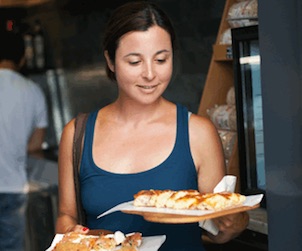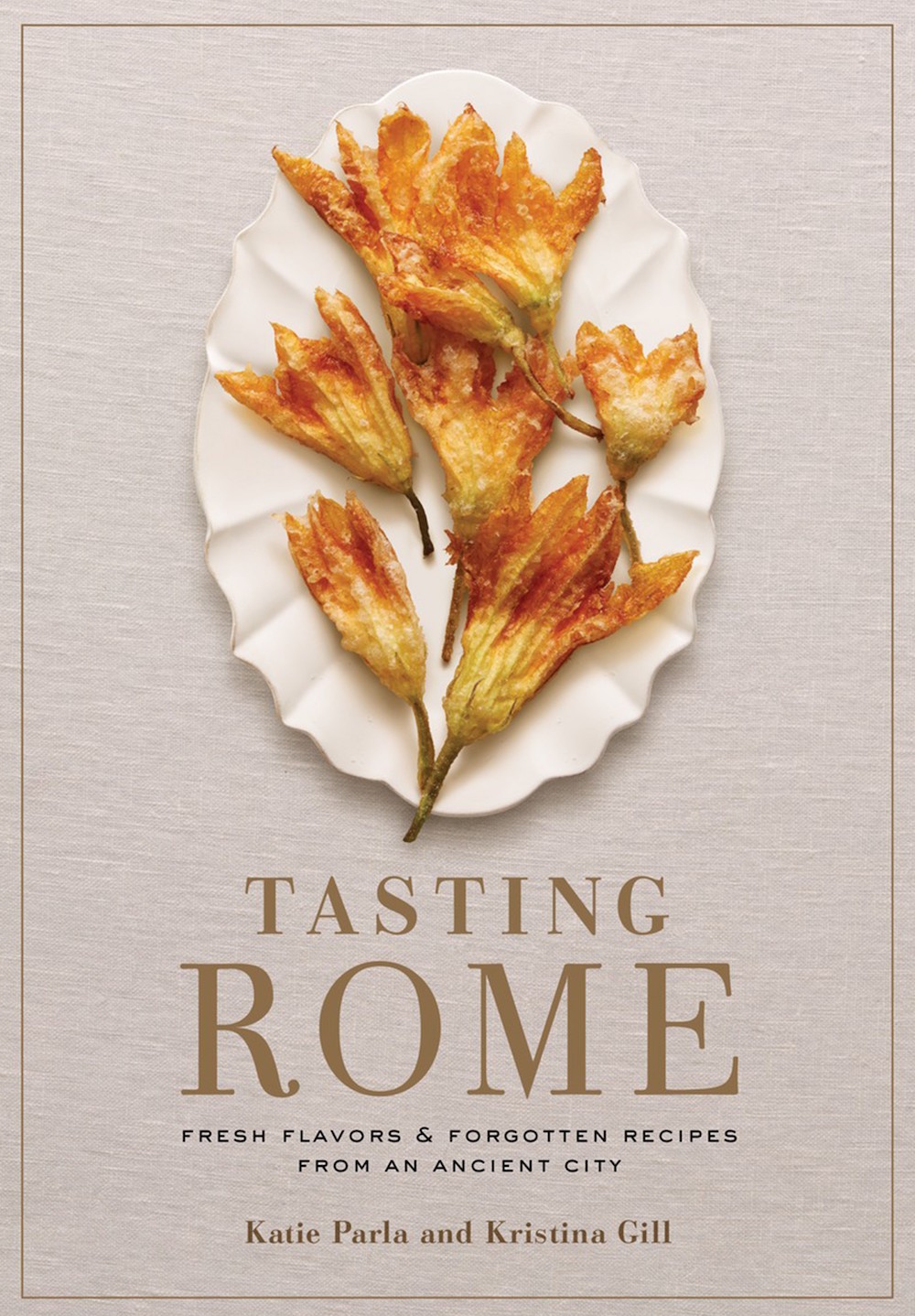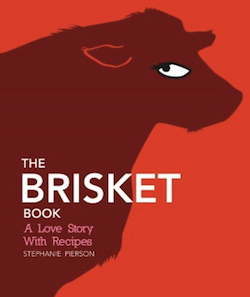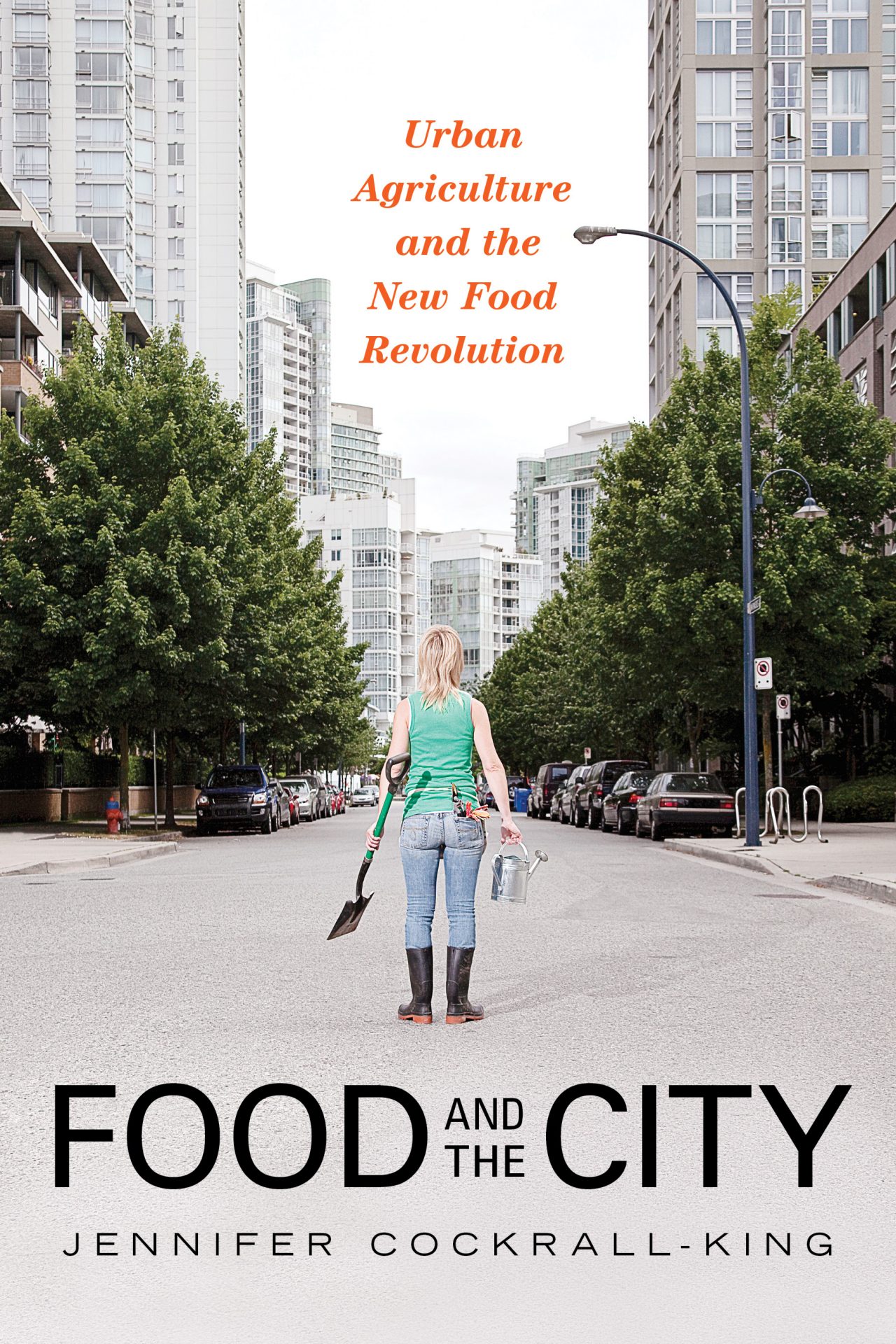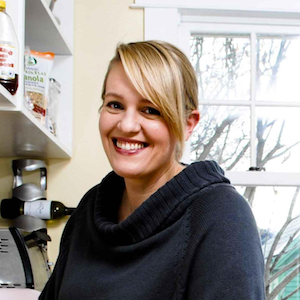Katie Parla and Kristina Gill’s Tasting Rome cookbook shows how Romans eat now.
If a friend is headed to Italy and asks me for dining tips, I will invariably point them to Katie Parla. Parla is a thirty-something ex-pat American who’s lived in Rome for a decade and writes guides to it, and other Italian cities’ dining scenes that are both idiosyncratic and right on trend. Parla knows what’s going on and she knows what she likes. After a week last year in Palermo and Rome, eating exclusively on her written advice, I’ll bear witness that she’s very good at what she does, which she does over a bunch of platforms from e-book guides, to videos to apps; it’s all on her website katieparla.com.
It turns out she’s also very good at writing cookbooks. Produced in collaboration with co-author and photographer Kristina Gill, Parla’s Tasting Rome: Fresh Flavours & Forgotten Recipes From An Ancient City honours both, and features a foreword by her friend Mario Batali. The book is both a straightforward recipe collection. There’s all the standards from artichokes to tripe to cacio e pepe and so on, but also new things like cocktail recipes or avant garde pizza. It’s also a bit of a guide book, with stories about restaurants, neighbourhoods, dishes and, of course people. Tasting Rome is also, importantly, interspersed with Gill’s pretty photography. If you’ve never been to Rome, it will make you want to go. If you have been to Rome, it will make you want to go back badly.
I was very pleased to discuss Tasting Rome with Parla by Skype last week for the interview below.
This interview has been edited for clarity and style.
Good Food Revolution: How did this book, Tasting Rome, come to be?
Katie Parla: We started thinking about the book a couple of years ago. I write a lot of food oriented travel pieces. Kristina Gill, the co-author and photographer on the book, had shot some of my pieces although we had never actually directly worked together before. I had written some copy for Australian Gourmet Traveler and she did the photos and we realized through that piece in particular (called Rome Dish by Dish) that we might have something. The editor was willing to let us go beyond classic Roman cuisine to represent what Romans eat now. So, we were talking about Roman fast food and all these new quick ways to eat, which are delicious and also really rooted in Roman tradition. I thought, well that’s an interesting void in the Rome content out there, although it follows a lot of what I write about on my blog. So, why not create this portrait of the city that acknowledges the classics but then also acknowledges that the classics are also in constant evolution? In the book we get all these fantastic cocktail recipes from Rome’s blossoming cocktail culture and different dough recipes, various pasta and other dish recipes from the chefs and mixologists that are pushing this food evolution.
It’s not a revolution. They’re not breaking down all sorts of Roman food principles. They’re preparing Roman food with Roman ingredients but doing it in a way that is appropriate for the 21 century, responding to the economy, the way people eat and the changes in the food system.
GFR: But as you say the recipes in Tasting Rome are very much rooted in tradition. There’s no processed food in your book. But I’ve often heard Europeans complain that diets are changing there towards more of that.
KP: Not in the book, no! But there is an increasing amount. When you’re in Rome you won’t see a ton of childhood obesity or anything, but it’s sort of a unique place for that. I think a lot of Italian kids eat a ton of junk food, and the country has soaring obesity rates.
GFR: I have been lucky enough to travel a fair amount in Italy in the last few years, and noticed the sort of obesity in the South, where it’s poorer than the North or the capital.
KP: It bodes very badly. And in Rome you have a big range of food qualities. In the centre, people are extremely wealthy so the for they have access to tends to be more genuine and authentic. Whereas if you visit a variety of neighbourhoods, you’ll see discount markets that have poor quality things. I live in Monteverde, which is a posh neighbourhood, so we have a very fancy supermarket. I like to go to the [open air] market, but because it’s only open in the morning sometimes I have to go to the supermarket. I am usually the only person in line that’s just buying raw materials. Most of the patrons are with buying things that are fully prepared or sort of midway prepared, where you open a package and throw it in a pan. So, I think there are a lot of ways to eat in Italy. I wish everyone was cooking from raw ingredients and had a really strong relationship with their market, but it’s an expensive place to live and a lot of people are working when the markets are open.
When it came to coming up with a list of dishes for Tasting Rome, we did not want to showcase everything that’s going on in the city because not everything is amazing. We wanted to spotlight the great food made by really wonderful, hard working, dedicated people. For example, we wanted to show the gricia from Armando al Pantheon that Armando’s son Claudio has been dutifully reproducing for decades. We also wanted to show case the innovations that are really, really rooted in Rome but are also novelties, like trapizzini and the various pizza by the slice repines that have very high hydration doughs that require a little more skill. Those are a feature of a new baking culture in Rome in which bakers have been restored dignity through the very, very hard work of Gabriele Bonci. You have to go to Pizzarium to experience Gabriele’s pizza which is really, really a Roman forum. It’s sheet pan pizza, cut into squares to take away and you eat it standing up, but the ingredients are amazing, the flour is amazing and the whole, final product is completely natural and digestible and delicious. It takes a long time and a lot of skill to make.
GFR: Is that the key to really great Roman, or Italian, cuisine? That it’s not overly complicated, but requires some time and effort?
KP: Yeah, definitely.
GFR: It looks easy, but it’s not always.
KP: A lot of the dishes in Tasting Rome are very simple. The meat dishes, because Romans tend to have the tougher cuts inter tradition, have to be cooked for a long time. You have stand and work with them for a long time. So, the time commitment varies, but it is a simple cuisine. Roman cuisine is vegetable based, it’s single flavour based, it’s very savoury, and I think that because a lot of dishes, and again I’ll use gricia as an example, use very few ingredients, you can’t really cheat with those ingredients. So if you’re using poor quality pasta, or poor quality guanciale, you’ll lose a lot of the complexity of the final dish.
That doesn’t mean you have to spend a lot on specialty products to cook these foods. What I try to communicate in Tasting Rome is that although these are Roman recipes, inspired by Rome, you can restyle the based on what you have. I don’t want you to mail order expensive items, you can use whatever you have in your own backyard, especially if you have a garden!
GFR: I think Tasting Rome is also a bit of a guide book. Or, if you know Rome a little bit, it’s a bit of a momento, or a source of inspiration. I sighed a lot when I read through it.
KP: Ideally people will want to cook from it! But, that’s right, you don’t have to make the recipes to use it to understand the themes of Roman cooking. So, it is a sort of travel guide and cookbook at the same time.
GFR: I can’t tell because I absolutely love Rome, so I am biased, but it seems to me that Rome is getting a little bit more attention these days? And when I was there last every restaurant seemed to advertise that they had “authentic Roman cooking”, whether they looked like they did or not. My point is they seemed proud of it.
KP: Yes! And it’s funny because words like “authentic” or “traditional” or “natural” don’t have any legal definition. In advertising, you may call your food whatever you like, at least with those words.
Rome has gotten a lot of press lately. And there are a few really wonderful cookbooks. My friend Rachel [Roddy] just put out her cookbook. I think in North America it’s called my My Kitchen in Rome, which is great. So, there are a number of writers that are showcasing Rome, and certainly a lot of video and television shows that have passed through Rome, like Andrew Zimmern’s Bizarre Foods, Food Network Canada’s You Got To Eat Here…
GFR: What? John Catucci?
KP: Yup. Airing April 8th.
GFR: That’s great! Will watch! It sounds like life is good for you in Rome?
KP: Yeah. It’s been 13 years. I had a bit of a crisis, maybe 5 years ago when all my Roman friends had gone to London to find work. I thought, what am I doing here? What happened to my Italian life? But now they’re coming back because they want to have families in Italy. And I really, really love living in Rome. I am constantly stimulated by it. It’s a beautiful place. It is also a place with some, let’s say, bureaucratic issues, and there are all these idiosyncrasies which have been going on for 2,700 years. But that’s why I am still there. I know parts of the history, but there still neighbourhoods I haven’t been to. There are people I still haven’t met. So, I am still obsessed with the city. I am still going strong. I will be there on your next trip!
Katie Parla will be hosting a Roman dinner at Enoteca Sociale in Toronto on the evening of April 24. Click here for more information.
 Malcolm Jolley is a founding editor of Good Food Revolution and Executive Director of Good Food Media, the company that publishes it. Follow him on Twitter or Facebook.
Malcolm Jolley is a founding editor of Good Food Revolution and Executive Director of Good Food Media, the company that publishes it. Follow him on Twitter or Facebook.

